Storytelling is now an essential part of marketing, with businesses leveraging the power of narrative to connect with their audience and establish a unique brand identity. Great storytelling evokes emotions, inspires trust, and drives customer engagement. This article explores the key components of successful storytelling in 2023 and the brands inspiring us to do it even better!
Brand Storytelling – Why Is It So Important?
Humanity is increasingly resistant to traditional advertising. Gen Z has an attention span of around 8 seconds and it’s 12 for Millennials. 69% of the Gen-Z demographic also find traditional ads disruptive and not in a good way. The majority click ‘skip’ on skippable ads after 9.6 seconds or have upgraded to Pro and Plus platforms that eliminate adverts completely. Consumers in 2023 seek community-driven content that evokes an emotional response, keeps their attention, and helps them understand a brand or product better.
Your brand stories define who you are, what you do, what you care about, who your customers are, and the values you align with. Storytelling for marketing contains the same components as writing a storybook. The four elements necessary for a great story structure are character, plot, setting, and emotion. If we successfully translate these elements into a marketing campaign, it’s likely to resonate with our audience.
Emotional resonance – Delta
It’s good for readers to feel emotions when interacting with a brand’s content, which is why telling a story that evokes an emotional response does work. Emotionally charged content encourage consumers to invest in the brand. Individuals trust others who are similar to them, and community-driven content such as UGC and ratings & reviews elicit emotional reactions that strengthen the connection between customers and the brand.
Delta’s Instagram unites people through the common theme of travel and exploration. And exploration doesn’t end with a plane ride. The brand explores different cultures, stories and experiences teaming up with accounts like @blackandabroad to share information about black cultures around the world. Featuring travellers and influencers, Delta hits the storytelling sweet spot for emotional authenticity.
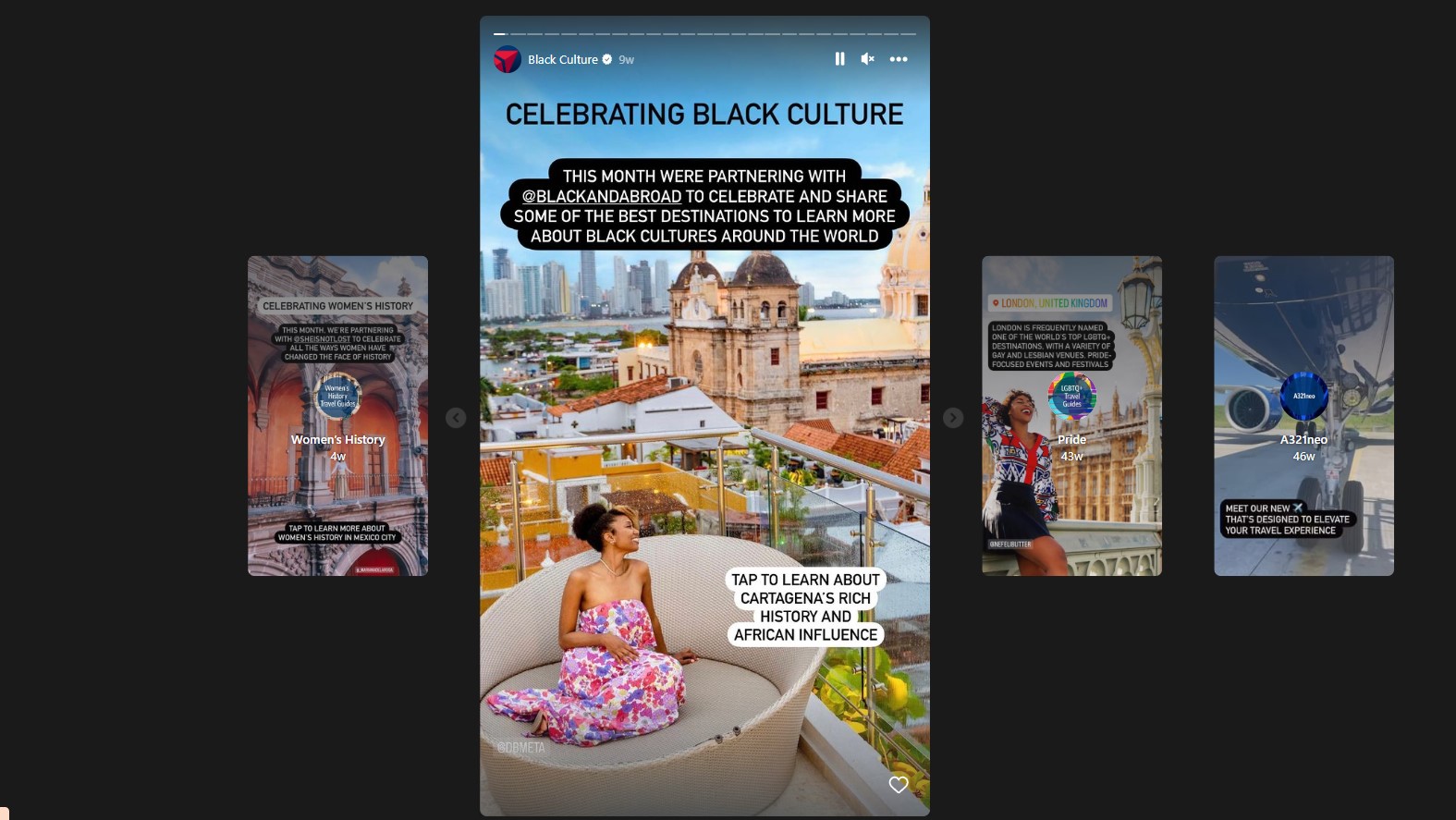
Real and Unedited – Humans of New York
It’s no secret that we’re a bit obsessed with HONY here at Contentworks Agency. Humans of New York (HONY) is a photoblog and book of street portraits and interviews collected on the streets of New York City. Started in 2010 by photographer Brandon Stanton, the concept developed a large following through social media and is now up to 12.6 million fans on Instagram.
Brandon frequently organises fundraising campaigns on GoFundMe that raise upwards of $1 million to help the people he features.
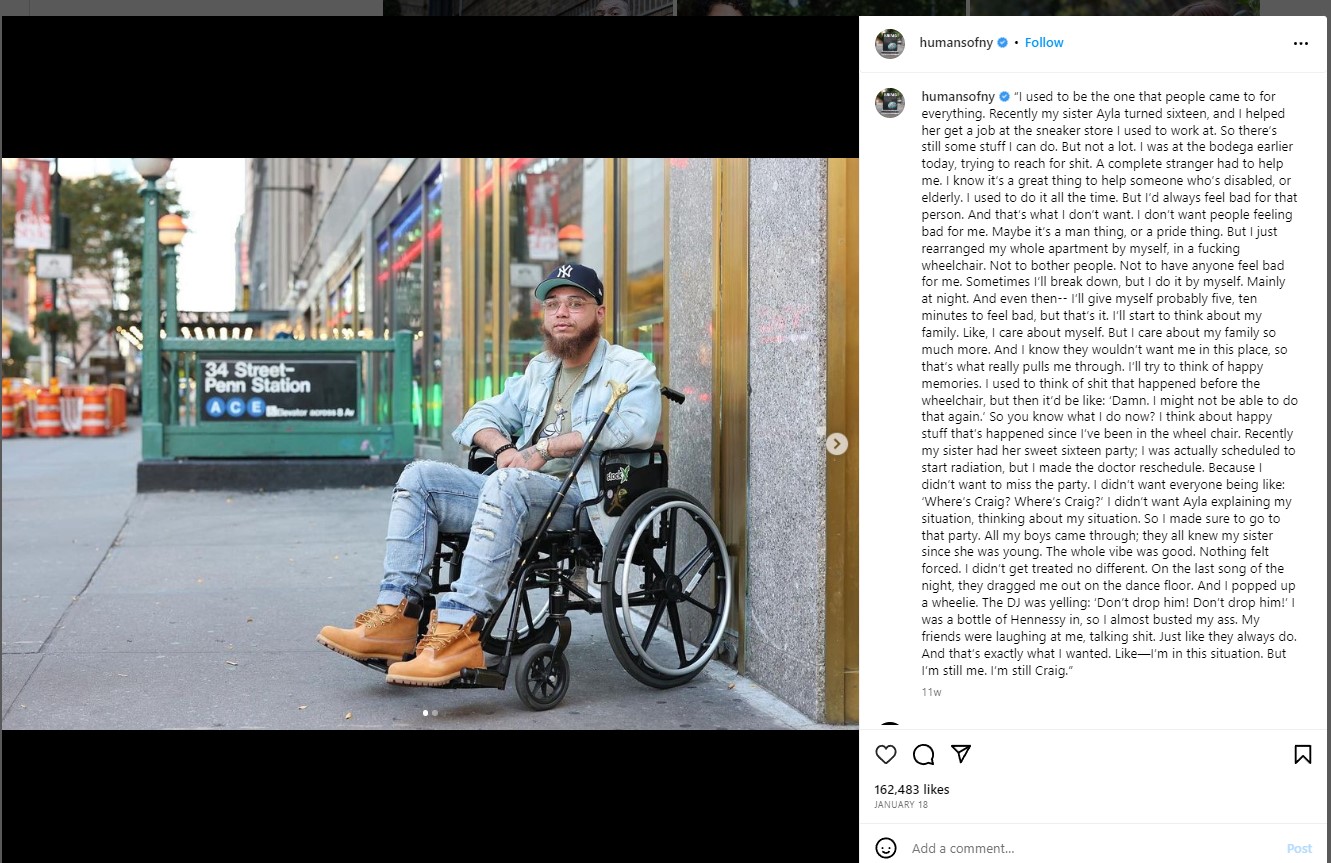
Posts like this one on Instagram show the unedited raw beauty of storytelling. Nothing has been filtered out, added or edited. It is the story of Craig and in a landscape with so much fake, we crave the real. HONY also keeps their content fresh by travelling to different countries and featuring people of different cultures. This level of diversity has meant they are known worldwide.
Great storytelling rarely needs much of a call-to-action. If stories resonate so deeply with an audience, they will happily part with their money whether it’s for charity or a purchase.
Diverse Storytelling – Morgan Stanley
A good story needs characters but they don’t need to be fictional ones. Instagram is a good place to introduce your team, key stakeholders or a charitable collab like Morgan Stanley did here. In partnership with @creditonecharlestonopen, they brought together 60+ kids and hosted a clinic providing quality tennis instruction to the Charleston youth community. Putting real faces to your brand adds credibility and purpose, especially when it’s for community driven initiatives like this one. This is a good route for banking brands who need to distance themselves from the cold and uncaring legacy bank image.
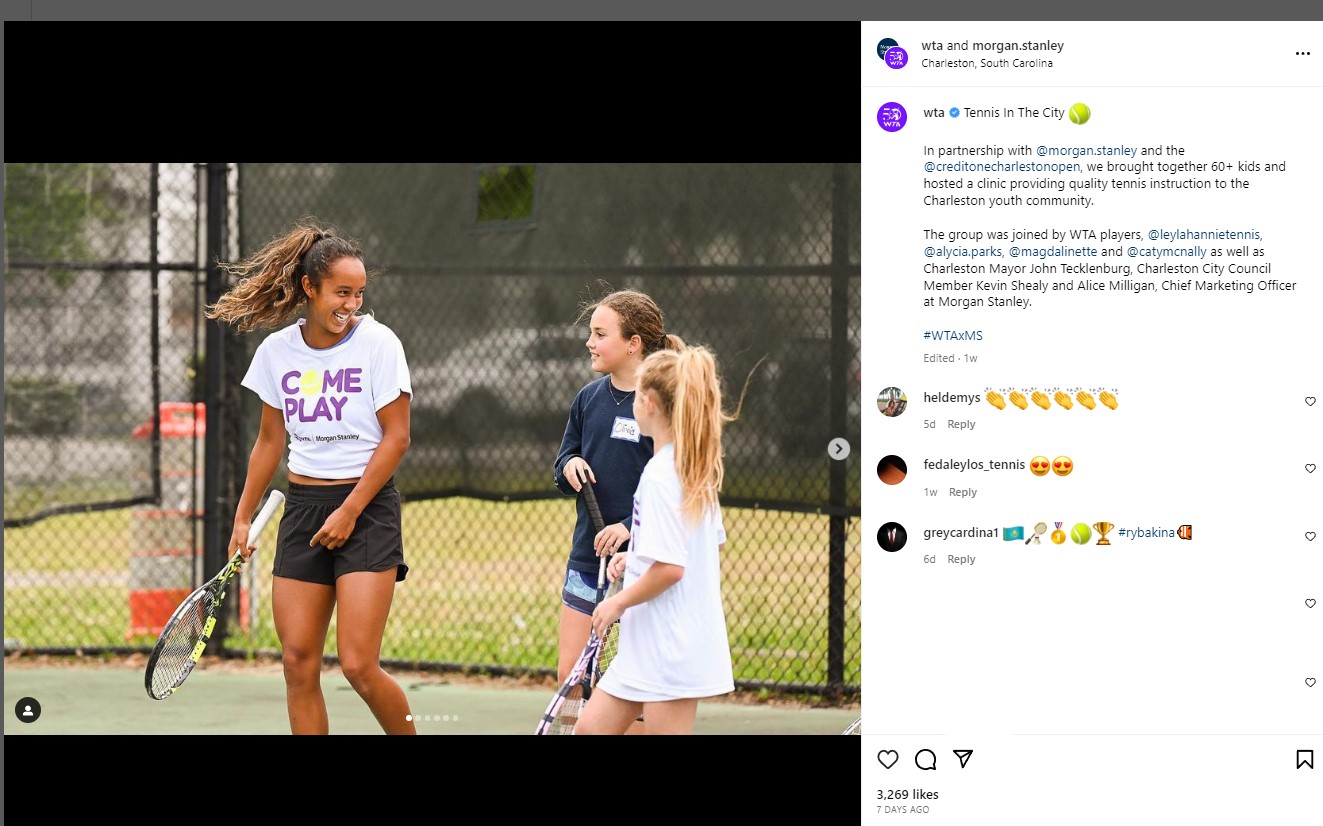
Morgan Stanley also highlights its diversity with its posts. A study published in the Journal of Business and Psychology concluded that when organisations encourage employees to step into others’ perspectives through storytelling it can create a lasting positive effect on diversity-related outcomes.
Professor Paul Zak, director of the Centre for Neuroeconomics Studies at Claremont Graduate University, studied the effects of storytelling on the brain. He has found that when listeners hear a compelling story that engages them emotionally, their brains release oxytocin, a molecule that causes them to feel empathy and create stronger bonds. His research has found that compelling stories can directly cause listeners to engage in positive changes.
Storytelling is a great opportunity to exercise diversity for your brand. You can do this by sharing stories from different perspectives, crediting authors and celebrating differences.

User Generated Content – 24 Hour Fitness
24 Hour Fitness compiles staff and customer generated content (UGC) to highlight positive customer experiences, training challenges and fitness achievements. Like this Insta post below. This is great because it can help to establish a connection, differentiate the brand from its competitors, and increase brand loyalty and advocacy. It also shows them to be experts in their sector.
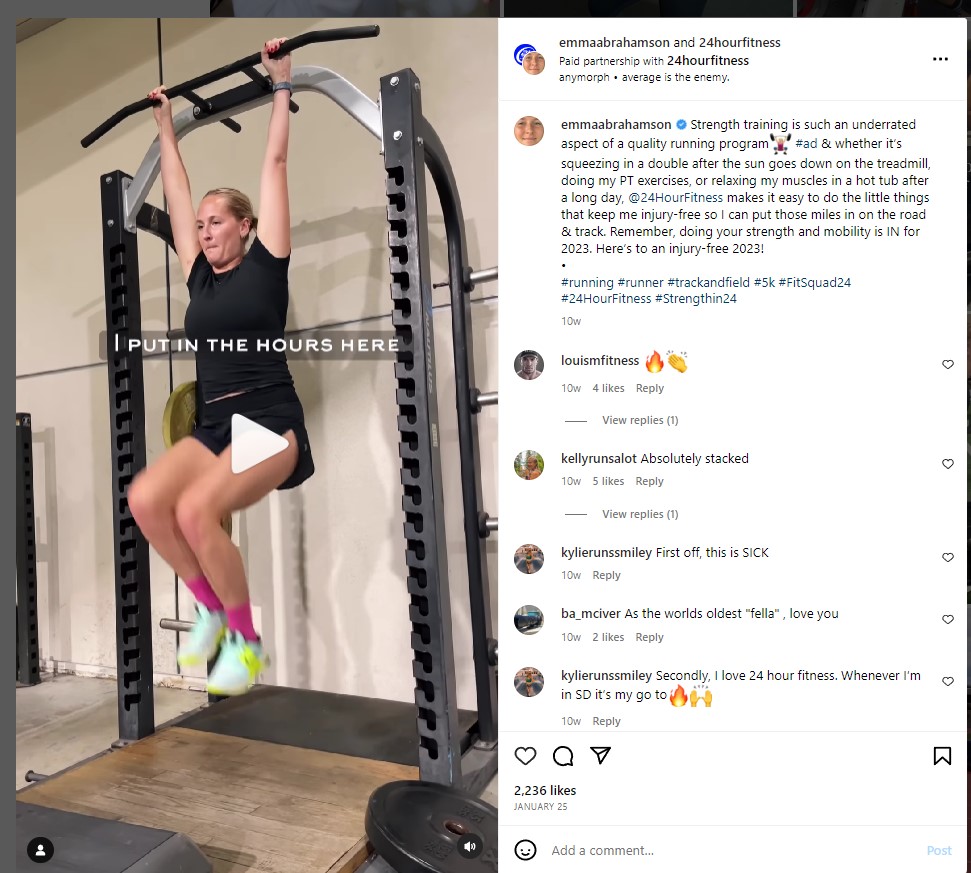
Millennials consider user-generated content to be 35% more memorable compared to materials originating from traditional sources. Advertisements based on UGC experience a 4-fold increase in click-through rates and a 50% reduction in cost-per-click compared to the average. Incorporating UGC leads to a 29% increase in web conversions as opposed to campaigns or websites that do not feature it.
Being relatable through UGC storytelling is a win for most brands. We want brands to understand our challenges and offer up solutions to help us. Do you want to see an Instagram full of perfect models or real people with different physical challenges and needs?
Gymshark is another brand that hits the UGC, authentic sweet spot. They regular feature real gym goers, their different fitness challenges, body shapes, ethnicities and backgrounds. Posts like this one on Instagram link to the full story in their blog. This creates intrigue and also drives traffic over to the site. Gymshark also encourages users to share their progress with hashtag #Gymshark66.

Nostalgic Storytelling – McDonalds
Nostalgia can be effective in brand storytelling because it taps into human psychology and emotion. Nostalgia marketing seeks to create a feeling of warmth and familiarity. It takes you back to a time when you felt safe, protected and carefree. Isn’t that something all adults crave on some level?
One way that brand nostalgia can help sell products is by creating a sense of authenticity and heritage around a brand’s products. By highlighting the history and legacy of a brand, companies can create a sense of credibility and trust that can make consumers more likely to purchase their products.
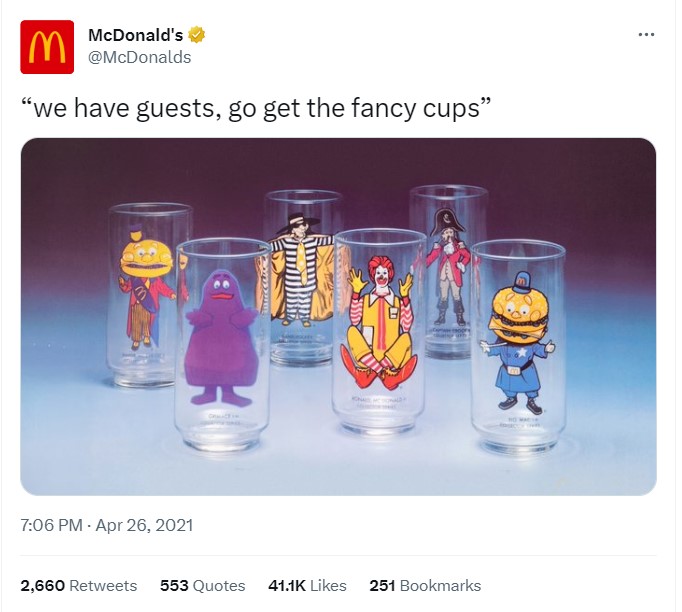
“We have guests, go get the ‘fancy cups’ tweets McDonalds. These McDonald’s glasses were all the rage in 1976 and were actually considered collectables. Conjuring this nostalgia for older audiences strengthens their belief in the brand, and for younger audiences, it reminds them McDonalds has been going strong for decades. McDonalds encourages fans to tweet their nostalgia photos making this a very warm and fuzzy place to be!
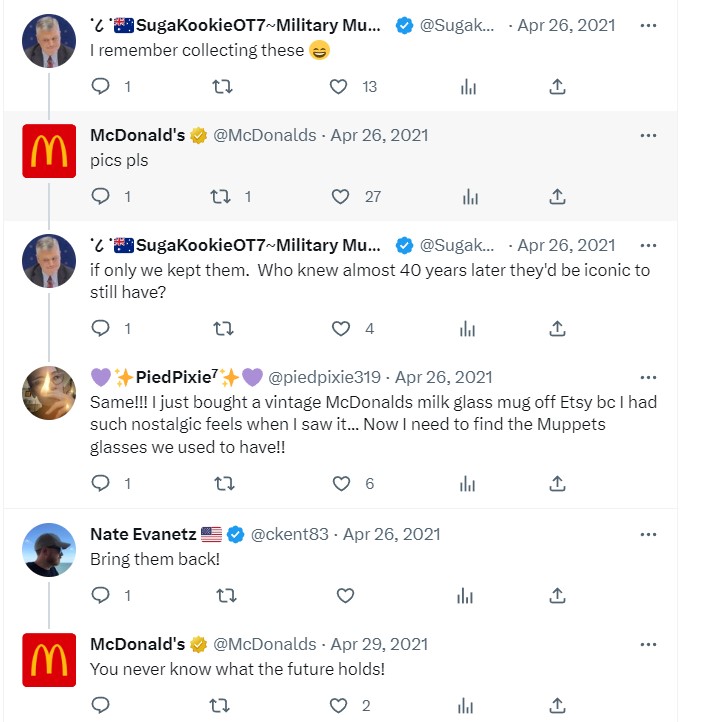
When it comes to storytelling, McDonald’s has also always followed a strategy. The characters in their commercials are “normal people” just like us. The Dad taking his kids to McDonalds after school or the college friends sharing some fries. (sharing fries? Ok we take that back!) The link to childhood memories, fun road trips and the feeling of enjoying a fun treat is instilled in us through decades of clever storytelling. Ronald McDonald acts as a brand character and represents fun, curiosity and playfulness.
And on the subject of nostalgic storytelling. We love this ad from BMW which pulls together stories from its classic car club members. Notice how each speaker is from a different region, has a different accent and a unique story to tell. The advert feels authentic, unpolished and warming. As a marketing agency that produces videos we know that this video was probably carefully planned, scripted and edited. But it doesn’t feel that way.
Great Platforms For Storytelling in 2023
- Instagram is an ideal choice for brands looking to share their stories through images and short videos. Instagram’s features, such as Stories, Reels, and IGTV, allow businesses to create a diverse range of content that showcases their brand identity, products, and services. Instagram Stories, with their 24-hour lifespan, offer a unique opportunity for businesses to share timely, behind-the-scenes content, while Reels enable brands to share longer-form videos that delve deeper into their narrative.
- Facebook remains a powerful platform for brand storytelling due to its massive user base and versatile content formats. With options to share text, images, videos, and live streams, businesses can tailor their content to suit their target audience and storytelling goals. Facebook Stories provide a similar experience to Instagram Stories, while Facebook Live enables real-time interaction with viewers, fostering engagement and building community. Additionally, Facebook Groups can be used to create niche communities where brands can share exclusive content and interact with their most loyal followers.
- LinkedIn is a professional networking platform that allows businesses to share their stories with a more targeted, career-oriented audience. Brands can leverage LinkedIn to showcase their company culture, industry expertise, and thought leadership through articles, videos, and SlideShare presentations.
- Twitter is a fast-paced platform that enables brands to share their stories through concise messages and real-time updates. With its character limit, Twitter forces businesses to convey their narrative in a succinct and engaging manner, making it an excellent platform for sharing news, announcements, and flash news and sales.
- TikTok has rapidly become a popular platform for brand storytelling, particularly among younger audiences. Its short-form video format encourages creativity and allows brands to share engaging and entertaining content. Brands can participate in TikTok’s trending challenges, collab with influencers and creators, and leverage the platform’s editing tools to create dynamic, shareable videos that showcase their stories.
- Podcasts have grown in popularity as a storytelling medium, allowing brands to share their narrative through audio content. Podcasts provide a unique opportunity for brands to delve deeper into their story and engage with their audience on a more intimate level. Brands can create their own podcast series or collaborate with existing podcasters to reach a wider audience.
Storytelling in 2023 remains a powerful marketing tool but its success hinges on a brand’s ability to authentically convey its core values and messaging. Do you want to craft the perfect storytelling campaign for your brand? Talk to our team now about storytelling marketing.
